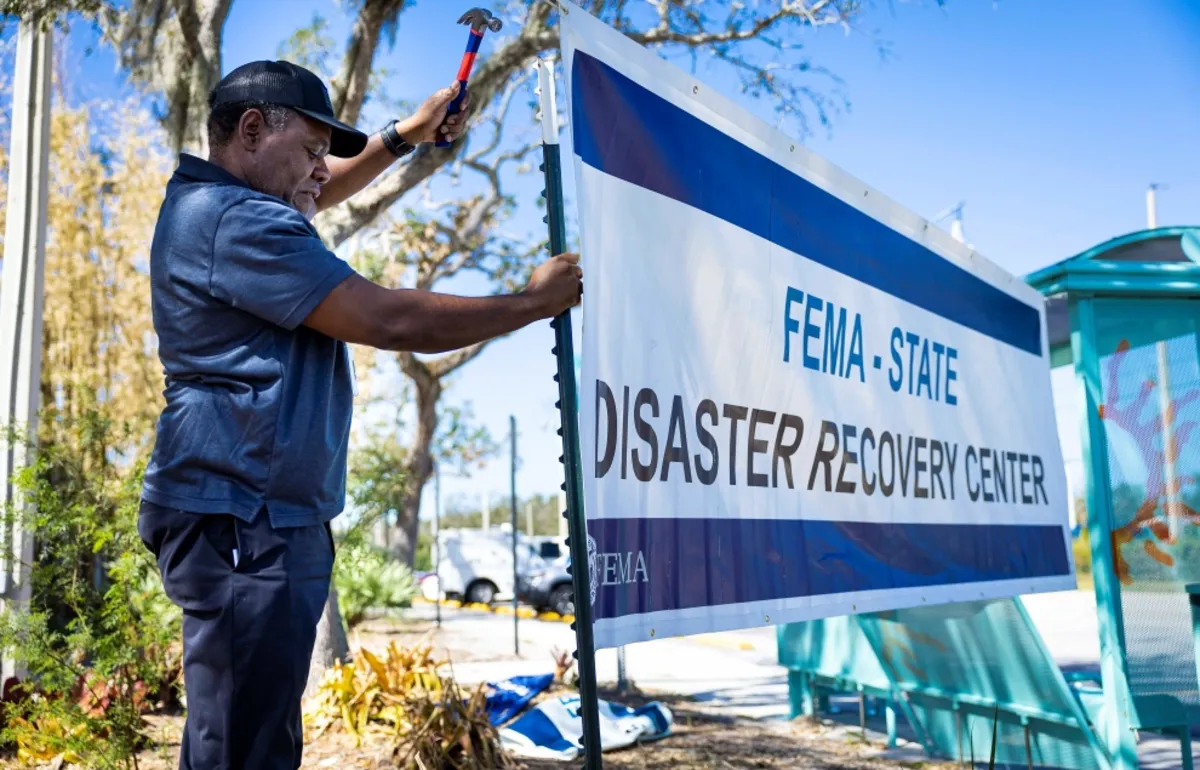
The Trump administration's advisory body, known as the FEMA Review Council, is intensifying its examination of the Federal Emergency Management Agency (FEMA) to assess which responsibilities could potentially be transferred to state governments or other entities. This follows the council's second meeting held on Wednesday in Louisiana, coinciding with severe flooding incidents in Texas and New Mexico, where FEMA personnel are actively involved in disaster response efforts.
The backdrop of ongoing flooding highlights the significant challenges faced by the Trump administration regarding its proposal to eliminate FEMA. During the council meeting, Homeland Security Secretary Kristi Noem criticized FEMA for its perceived slow response times in crisis situations. She asserted that state and local governments should take the lead on emergency management, stating, “It has been slow to respond at the federal level. It’s even been slower to get the resources to Americans in crisis.” Noem emphasized the need for a complete overhaul of FEMA, advocating for a more responsive agency aligned with President Trump's vision.
Despite the criticisms, Noem defended the federal government’s response to the devastating floods in Texas. Some lawmakers have expressed concerns that significant budget cuts to FEMA and the National Oceanic and Atmospheric Administration (NOAA) have adversely affected the preparedness and response capabilities during disasters. “We owe it to all the American people to deliver the most efficient and effective disaster response,” she remarked, indicating that the current response methods are in line with President Trump’s expectations for immediate action and resource allocation.
Since its inaugural meeting in May, the FEMA Review Council has established various subcommittees to address specific areas of concern. The Disaster Response and Recovery Assessment Subcommittee, led by Kevin Guthrie, executive director of the Florida Division of Emergency Management, is working on recommendations for FEMA to implement swiftly. Guthrie highlighted that the subcommittee aims to provide actionable insights that FEMA can adopt with minimal bureaucratic hurdles.
One of the key focuses of the subcommittee is to enhance assurances for states regarding reimbursement for disaster response efforts. “We think we have some ways that we will be recommending to the acting administrator to help get that done,” Guthrie explained, aiming to ensure that state governments are not left with the financial burden of disaster relief, which should be covered by federal funding.
Guthrie also mentioned the potential for shifting some traditionally federal roles to state or non-traditional partners. “We’ve already had associations starting to come forward saying, ‘With just a tad bit more money, we could actually take on that role and do that,’” he noted, referring to the Emergency Management Assistance Compact (EMAC), which facilitates resource sharing among states during disasters.
The National Emergency Management Association (NEMA), which oversees EMAC, is looking to adopt a more proactive role to alleviate some of the responsibilities at the federal level, potentially leading to a more streamlined disaster response process.
Virginia Governor Glenn Youngkin is heading the Federal-State Coordination Subcommittee, which aims to clarify the various roles of government agencies in disaster response beyond FEMA. Youngkin stated that the subcommittee is mapping out 32 distinct disaster response capabilities, which will aid in identifying areas where responsibilities can be shifted from FEMA to state and local governments. This approach intends to transition FEMA from a primary role to a supportive one, enhancing overall efficiency.
Additionally, the subcommittee is analyzing the federal financial assistance provided to state and local governments during and after disasters, addressing the pressing question of resource allocation for essential needs like housing and food recovery. “How do we move forward with pace in order to meet our citizens' needs?” Youngkin asked, highlighting the urgency of establishing clear pathways for resource distribution.
A Final Report Subcommittee has been tasked with drafting a comprehensive report detailing the council's findings and recommendations, which will be submitted to President Trump by November 16. This report will play a crucial role in shaping the future of FEMA and its operations amid increasing natural disaster challenges across the country.